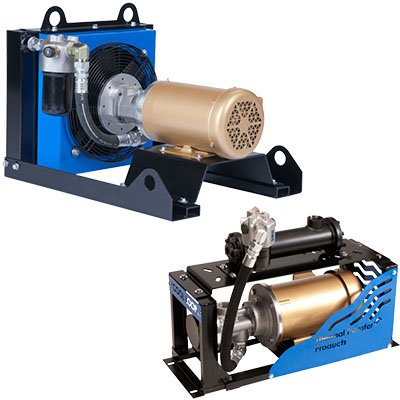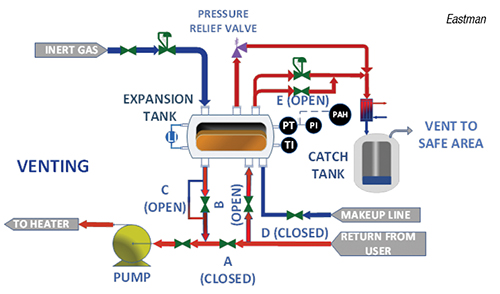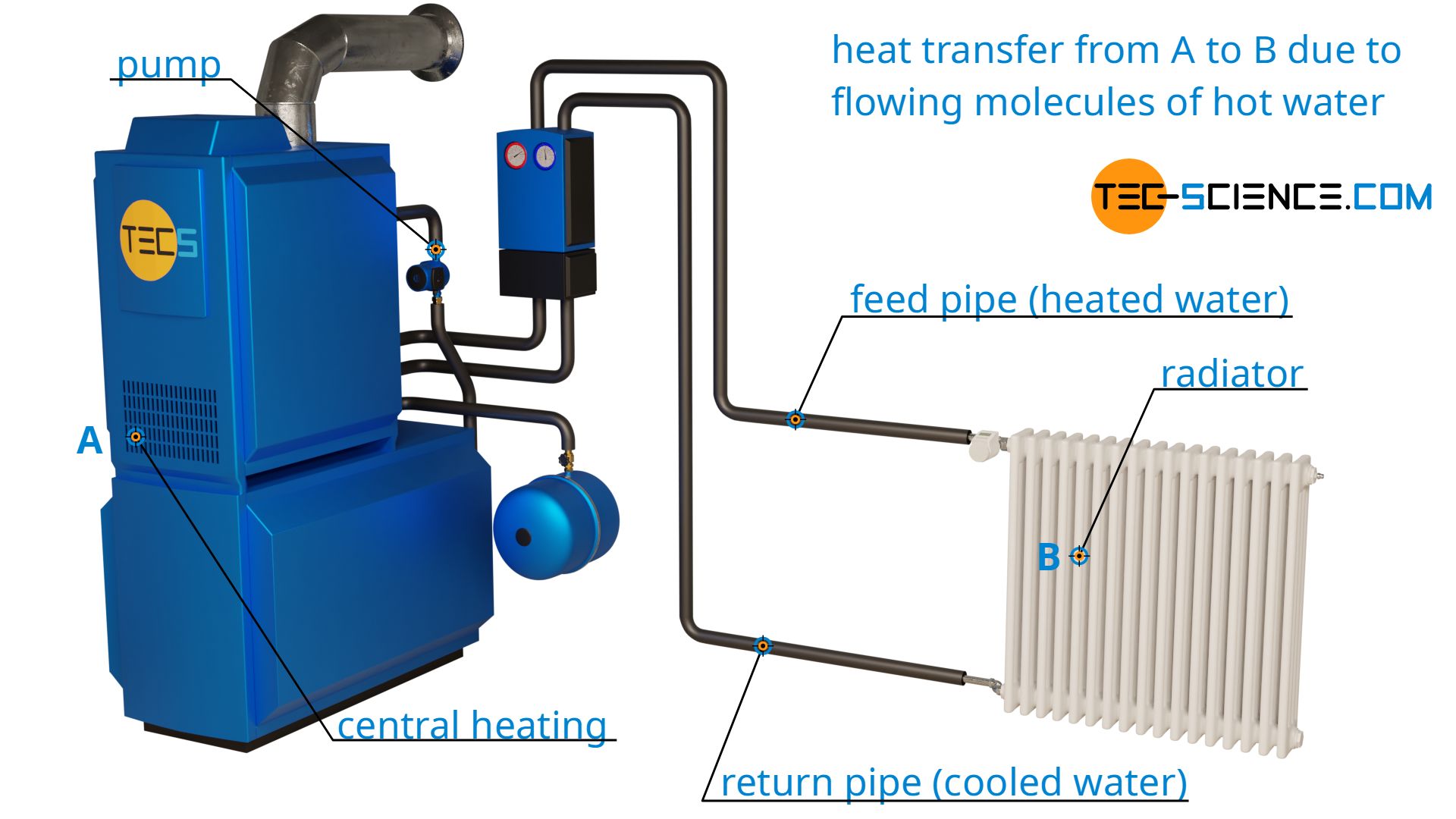How DVS Heat Transfer Systems Harness Next-Gen Fluids to Enhance Thermal Conductivity
Innovations in Heat Transfer Systems: What You Required to Know for Optimum Performance
Advancements in Heat transfer systems are transforming performance throughout different markets. Advanced products like graphene and nanofluids promise substantial enhancements in thermal conductivity. At the same time, the integration of IoT and maker learning uses possibilities for real-time tracking and improved power effectiveness. The landscape of thermal management is swiftly developing. Comprehending these developments is vital for accomplishing optimal system efficiency and sustainability in the future. What certain innovations are forming this improvement?
Emerging Products for Improved Heat Transfer

Advanced Heat Exchanger Designs
While traditional Heat exchangers have actually offered their objective in numerous applications, progressed layouts are currently arising to fulfill the enhancing needs for efficiency and efficiency. These cutting-edge layouts, such as plate, shell-and-tube, and finned-tube Heat exchangers, integrate improved surface and improved circulation patterns to enhance thermal transfer prices. On top of that, portable layouts allow for lowered space requirements without jeopardizing effectiveness. Advanced materials, such as composites and corrosion-resistant alloys, furthermore boost resilience and performance under severe conditions. Simulation modern technologies and computational fluid characteristics are significantly used to refine these layouts, ensuring peak Heat transfer features. As markets seek to lessen energy consumption and maximize outcome, the fostering of advanced Heat exchanger designs is essential in accomplishing these purposes.
The Duty of Nanotechnology in Heat Transfer
Nanotechnology plays a necessary function in enhancing thermal conductivity within Heat transfer systems. By adjusting products at the nanoscale, researchers have actually attained significant enhancements in energy performance. These developments not just maximize efficiency but also add to more sustainable power remedies.
Boosted Thermal Conductivity
Considerable innovations in thermal conductivity have actually emerged with the application of nanotechnology, revolutionizing Heat transfer systems throughout different markets. By including nanoparticles right into Heat transfer fluids and materials, researchers have actually attained impressive boosts in thermal conductivity. These nanoparticles, such as carbon nanotubes, graphene, and steel oxides, enhance the Heat transfer residential or commercial properties due to their high surface area and unique thermal characteristics. The resulting compounds show improved performance in applications ranging from electronics cooling down systems to eco-friendly energy technologies. The capability to customize the size, form, and structure of nanoparticles enables for maximized thermal monitoring solutions. Because of this, nanotechnology remains to play an essential role in the advancement of more effective and reliable Heat transfer systems, leading the means for improved industrial applications.
Power Effectiveness Improvements

Assimilation of IoT in Heat Transfer Equipments
The integration of IoT in Heat transfer systems introduces the execution of clever sensing units that improve functional performance. These sensing units make it possible for real-time data surveillance, enabling instant changes and optimizations. This technological development has the prospective to significantly enhance performance and energy monitoring in Heat transfer applications.
Smart Sensors Implementation
As Heat transfer systems progress, the integration of wise sensing units with the Internet of Things (IoT) has become a transformative method. These sensors allow real-time surveillance of temperature level, flow, and pressure rates, improving system effectiveness and integrity. By accumulating and transmitting data, they assist in proactive upkeep, decreasing the threat of system failures. In addition, clever sensors add to power savings by refining operational criteria based upon environmental problems. Their capacity to evaluate abnormalities and patterns enables informed decision-making, making sure peak efficiency of Heat transfer systems. As industries significantly embrace this modern technology, the application of smart sensors stands to transform how Heat transfer systems are handled, leading the way for greater sustainability and enhanced performance end results.
Real-Time Information Monitoring
How can real-time data monitoring enhance the efficiency of Heat transfer systems? By integrating Internet of Points (IoT) technology, Heat transfer systems can take advantage of continual information collection from clever sensing units. This real-time surveillance permits for instant analysis of temperature, flow, and pressure prices, enabling operators to identify inefficiencies quickly. Changes can be made to optimize efficiency, lower power intake, and prolong devices life-span. Additionally, predictive maintenance can be carried out, minimizing unanticipated downtime and costly fixings. The capability to envision efficiency metrics with dashboards improves decision-making, fostering an aggressive approach to system monitoring. Inevitably, real-time data checking not just improves operational efficiency however likewise adds to sustainability goals within industrial processes.
Power Efficiency and Sustainability Trends
Power efficiency and sustainability patterns are reshaping the landscape of Heat transfer systems, driving innovation and conformity across different industries. Organizations are increasingly focusing on energy-efficient layouts to lower operational prices and minimize environmental influences. The integration of renewable resource resources is ending up being more common, making it possible for Heat transfer systems to operate sustainably while meeting regulatory requirements. In addition, improvements in innovations and materials advertise reduced energy usage and boost overall performance. Lifecycle evaluations are additionally getting grip, permitting firms to assess the ecological influence of Heat transfer systems from manufacturing to disposal. This focus on sustainability not only supports corporate obligation yet additionally positions companies competitively in a market where customers progressively prefer environmentally friendly More Help solutions. As a result, power efficiency and sustainability continue to be important factors to consider for future advancements in Heat transfer innovation.
Innovations in Thermal Monitoring Solutions
While the demand for reliable Heat transfer proceeds to increase, developments in thermal monitoring remedies are arising to attend to both efficiency and sustainability difficulties. Advanced materials, such as stage change products and nanofluids, are being established to boost Heat transfer performance - DVS Heat Transfer Systems. These products enhance thermal conductivity and enable far better temperature level policy in various applications. In addition, innovations like active thermal control systems are gaining grip, making it possible for real-time changes to handle Heat circulation properly. These systems add to energy cost savings and reduce the ecological influence of thermal processes. Moreover, the integration of IoT in thermal administration promotes surveillance and anticipating maintenance, ensuring enhanced efficiency and long life of Heat transfer systems. Overall, these developments stand for substantial strides toward more lasting thermal administration techniques
Future Instructions in Heat Transfer Modern Technology
Arising developments in thermal monitoring services signify a promising future for Heat transfer modern technology. Researchers visit this page are significantly concentrating on creating materials with superior thermal conductivity and improved energy effectiveness. Technologies such as nanofluids, which have put on hold nanoparticles, supply significant improvements in Heat transfer efficiency. Additionally, the assimilation of wise materials that adapt to differing temperature level problems is gaining traction, permitting even more reliable and receptive systems. The increase of additive production strategies is likewise making it possible for the layout of complicated Heat exchanger geometries that enhance liquid circulation. The implementation of machine understanding formulas is expected to reinvent the optimization of Heat transfer systems, promoting predictive maintenance and performance enhancement. Jointly, these developments are poised to transform the landscape of Heat transfer technologies in various sectors.

Often Asked Questions

Just how Do I Select the Right Heat Transfer System for My Application?
Picking the right Heat transfer system entails reviewing application demands, consisting of temperature ranges, fluid residential properties, and efficiency needs. Evaluating system kinds, maintenance considerations, and cost-effectiveness additionally plays an important function in making an informed decision.
What Are the Upkeep Demands for Advanced Heat Exchangers?
Upkeep needs for sophisticated Heat exchangers normally consist of routine inspections, keeping track of for leaks, cleaning of surface areas, and assuring ideal circulation prices. Complying with manufacturer standards guarantees reliable procedure and lengthens the equipment's life expectancy.
Exactly How Do Ecological Factors Influence Heat Transfer Effectiveness?
Environmental variables significantly influence Heat transfer performance. Variations in humidity, airflow, and temperature level influence thermal conductivity and convective Heat transfer, ultimately impacting system performance and necessitating consideration throughout the design and operation of Heat transfer systems.
What Security Criteria Relate To Heat Transfer Systems?
Security requirements for Heat transfer systems generally consist of standards from companies such as ASME and ASTM. DVS Heat Transfer Systems. These criteria address products, layout, and operational methods to ensure integrity, efficiency, and protection versus hazards in different applications
Exactly How Can I Troubleshoot Typical Heat Transfer System Issues?
Troubleshooting common Heat transfer system concerns involves looking for leaks, making sure proper fluid flow, checking insulation stability, and validating temperature differentials. Determining these aspects can assist maintain system performance and prevent additional difficulties.
Nanotechnology plays an important role in improving thermal conductivity within Heat transfer systems. Substantial advancements in thermal conductivity have actually arised with the application of nanotechnology, transforming Heat transfer systems across various sectors. Innovations advice in thermal conductivity through nanotechnology have led the means for remarkable renovations in power performance within Heat transfer systems. Energy effectiveness and sustainability fads are reshaping the landscape of Heat transfer systems, driving technology and conformity throughout numerous industries. The combination of IoT in thermal administration helps with monitoring and predictive maintenance, guaranteeing optimized performance and durability of Heat transfer systems.